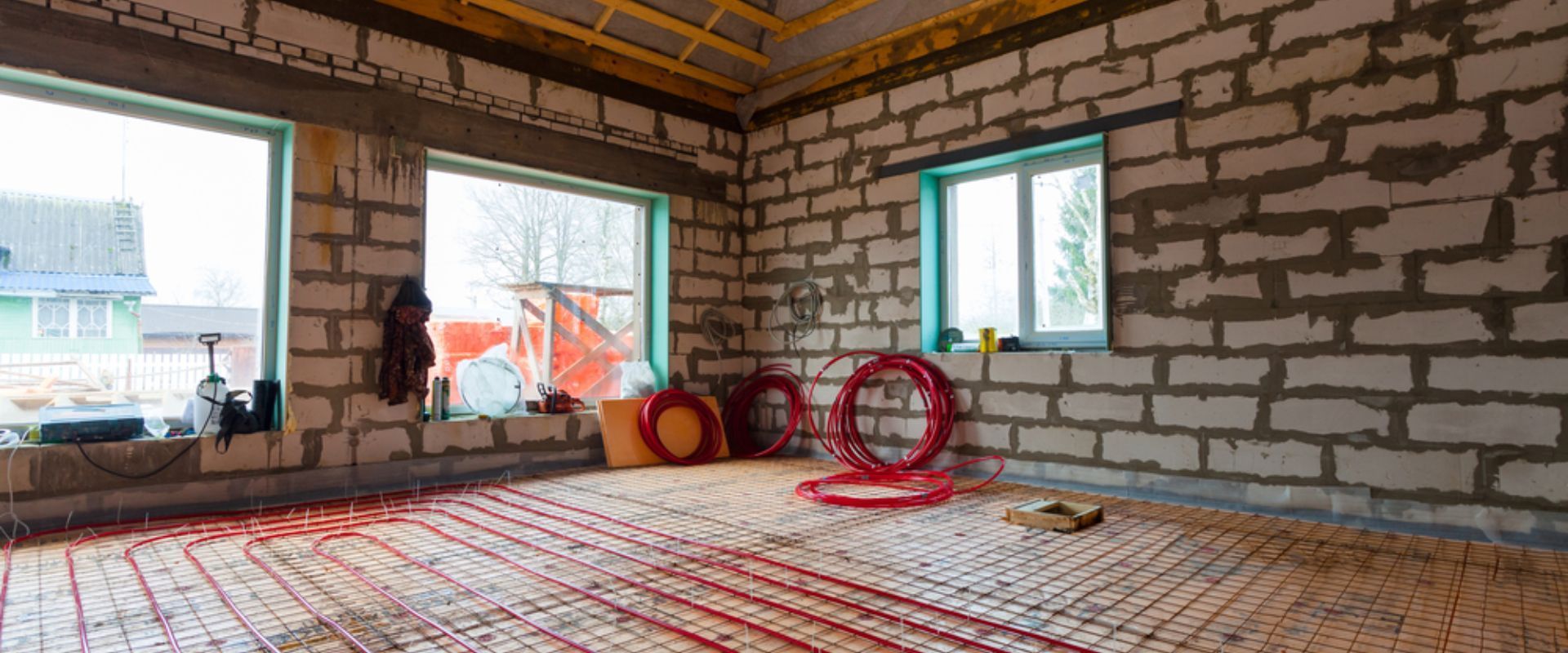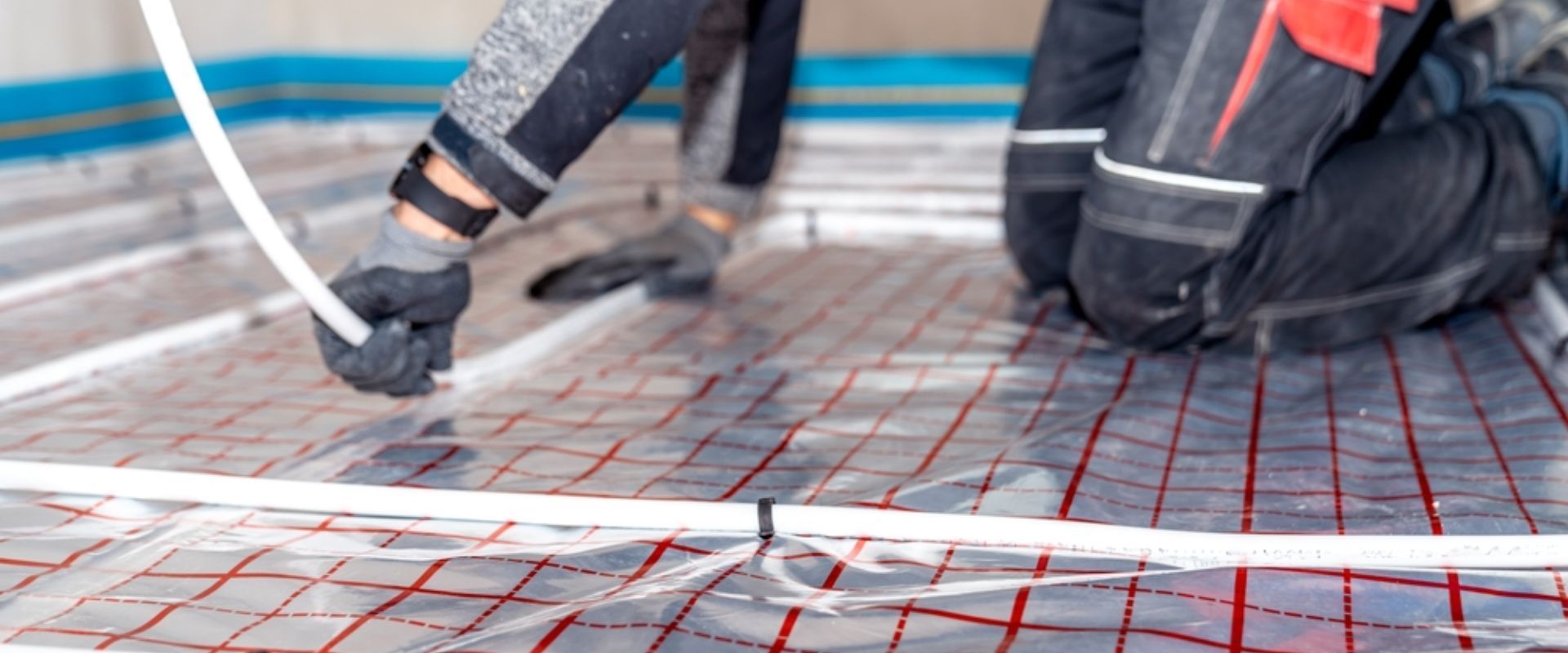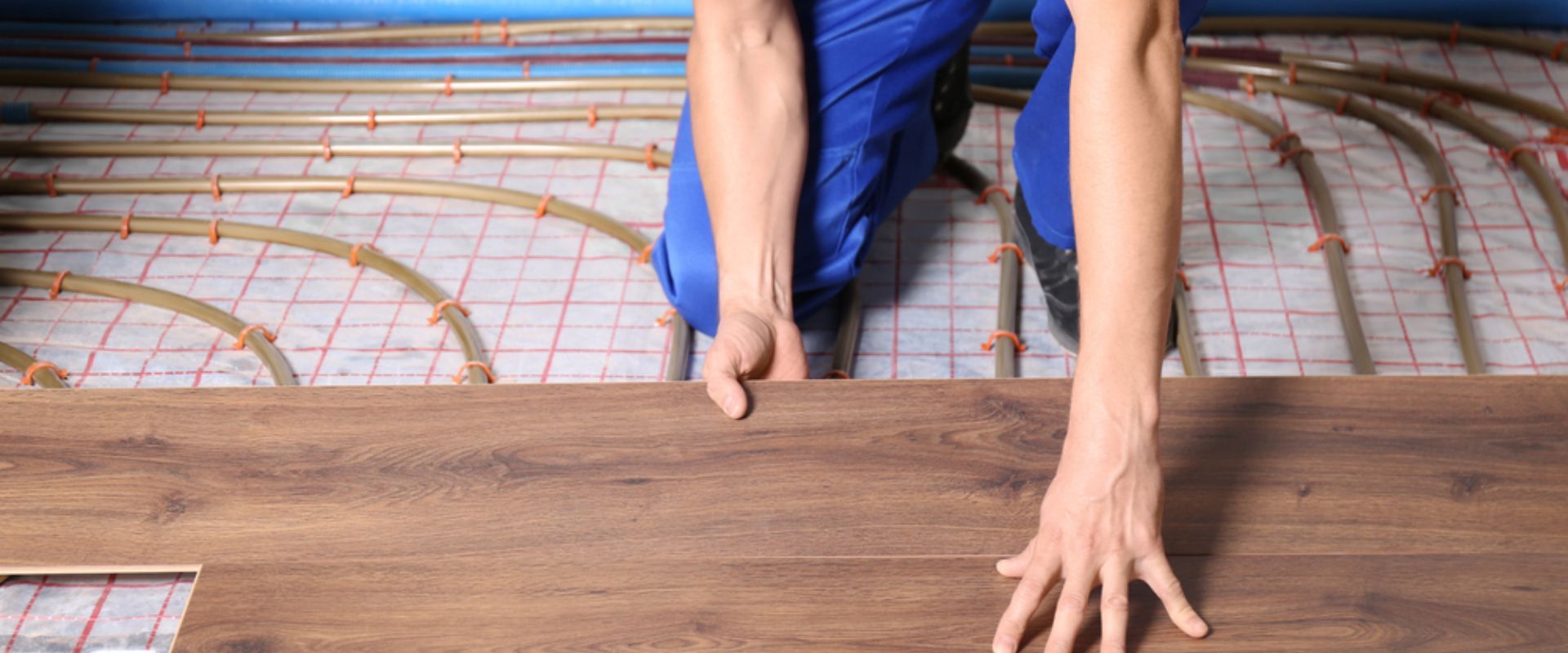Radiant Floor Heating Systems: Benefits and How It Works
Cold floors are one of the most frustrating parts of winter. Even when the air feels warm, stepping onto icy tiles in the morning can make your whole house feel less inviting. Traditional heaters or forced-air systems often solve the problem halfway, leaving some rooms too hot and others still chilly. On top of that, heating bills rise while comfort doesn’t always follow.
This is why more homeowners and builders are turning to radiant floor heating systems. Instead of heating the air around you, these systems heat the surface you walk on, spreading warmth evenly from the ground up. The result? Steady, gentle, and efficient heating that makes every corner of a room feel cozy.
In this guide, we’ll break down everything you need to know: what radiant floor heating is, how it works, the benefits of radiant floor heating, and why you need help from custom home builders for installing one in your home.
What Are Radiant Floor Heating Systems?

Radiant floor heating is a system that warms a room by heating the floor itself rather than circulating hot air. It uses either hot water pipes or electric heating elements under the floor surface to generate warmth. That heat rises naturally, keeping rooms evenly warm without the drafts or hot-and-cold spots common with other systems.
Unlike radiators or vents that take up space and blow air around, radiant floors are hidden beneath the flooring. This makes them both functional and design-friendly. Homeowners get clean walls, quiet operation, and a more natural heat that feels comfortable without feeling stuffy.
Radiant heating has evolved into one of the most efficient and versatile home heating options, commonly used in bathrooms, kitchens, basements, and even whole homes.
How Do Radiant Floor Heating Systems Work?

The principle is simple: heat is produced under the flooring and transferred directly upward. Since heat rises naturally, the system warms people and objects in the room evenly.
Hydronic Underfloor Heat Systems
Hydronic systems pump hot water through a network of flexible plastic pipes installed under the floor. A boiler or water heater supplies the heated water, and the floor surface radiates the heat into the room.
- Efficiency: Once warmed, hydronic systems are highly efficient and cost less to run over time.
- Best use: Large spaces or whole homes.
- Energy source: Can be paired with natural gas, oil, or even renewable energy systems like solar.
Electric Radiant Floor Installation
Electric systems use cables or mats powered by electricity. When switched on, the cables warm up, heating the floor above them.
- Efficiency: Best for smaller rooms, as electricity is more expensive than water heating.
- Best use: Bathrooms, kitchens, or remodels.
- Convenience: Easy to install, even during renovations.
The main difference lies in scale. Hydronic works better for big areas, while electric systems shine in targeted spaces.
Benefits of Radiant Floor Heating Systems

Heating floors instead of air offers several unique advantages:
Even Heat Distribution
Traditional heating pushes warm air up toward the ceiling, which often leaves feet cold and heads hot. Radiant floors heat the room from the ground up, so warmth is felt where it matters most.
Improved Comfort
No more icy floors in the morning or chilly drafts from vents. Radiant heating creates a gentle, consistent warmth that makes rooms more inviting.
Energy Efficiency
Radiant systems run at lower temperatures than forced-air heating but provide the same comfort level. This reduces energy consumption and can lead to lower utility bills.
Healthier Indoor Air
Because radiant systems don’t blow air, they don’t spread dust, pollen, or allergens. Families with asthma or allergies often find them a healthier choice.
Silent and Space-Saving
No noisy fans, radiators, or vents. Radiant floors are invisible and operate silently, giving you more design freedom in arranging furniture and creating open spaces.
Hydronic Underfloor Heat Systems
Hydronic systems are known for their long-term efficiency.
- How they work: A boiler heats water, which circulates through pipes under the floor. The warm water radiates heat into the flooring, which then spreads into the room.
- Pros: Extremely efficient for heating large spaces, lower operating costs, long lifespan.
- Cons: Higher upfront installation costs, requires professional installation.
- Best suited for: New home constructions, full-home installations, and commercial projects where ongoing efficiency is a priority.
Pro Tip: Hydronic systems can even be paired with renewable energy sources, making them eco-friendly and future-ready.
Electric Radiant Floor Installation
Electric systems are often chosen for smaller or specific areas.
- How they work: Cables or mats are installed under the flooring. When electricity flows through them, they heat up and warm the floor.
- Pros: Easier and cheaper to install, especially in remodels. Perfect for spot-heating bathrooms or kitchens.
- Cons: Electricity is more costly long term if used for large spaces.
- Best suited for: Individual rooms or renovations where comfort is needed in specific zones.
Pro Tip:
Many homeowners add electric radiant heating during bathroom remodels to enjoy warm tiles year-round.
Hydronic vs Electric: Which Is Right for You?
| Feature | Hydronic System | Electric System |
|---|---|---|
| Best Use | Whole home or large areas | Single rooms or remodels |
| Energy Source | Hot water (boiler, solar, gas) | Electricity |
| Efficiency | Very efficient over time | Less efficient for large spaces |
| Upfront Cost | Higher | Lower |
| Installation | Complex, professional required | Easier, sometimes DIY |
| Lifespan | 30–40 years | 20+ years |
Choosing between the two depends on your home size, budget, and energy preferences.
Installation Considerations
Before installing radiant floor heating, homeowners should consider:
- Best Flooring Options: Tile, stone, and concrete work best. Wood and carpet can be used with proper planning.
- Insulation: Adding insulation beneath the system prevents heat loss and boosts efficiency.
- Budget: Hydronic systems cost more initially but save more long term. Electric systems are cheaper upfront but costlier to run if used widely.
- Professional vs DIY: Electric mats can be DIY-friendly, but hydronic installations almost always require skilled professionals.
Professional Support for Radiant Heating
While some homeowners handle small electric installations themselves, most radiant heating projects benefit from expert support.
Professional services offer:
- Help choose between hydronic and electric based on your needs.
- Ensure safe installation and compliance with building codes.
- Provide warranties on both labor and materials.
- Offer guidance on pairing the system with flooring types and energy sources.
Working with specialists ensures a reliable system that delivers comfort for decades.
Conclusion
Radiant floor heating systems offer a solution to cold floors, uneven heating, and rising energy bills. Whether you choose the efficiency of hydronic underfloor heat systems for your entire home or the convenience of electric radiant floor installation for targeted comfort, the benefits are long-lasting: even warmth, lower energy use, and a healthier indoor environment.
If you’re planning a home remodelling or building new, radiant heating could be the step that transforms your comfort. Start planning smart heating with professional help today, the comfort and savings you gain will stay with you for years.
FAQs About Hydronic Underfloor Heat Systems
What are the main benefits of radiant floor heating?
Even heating, improved comfort, energy efficiency, better air quality, and more design freedom.
How long do radiant floor heating systems last?
Hydronic systems last 30–40 years, while electric systems often last 20+ years with proper care.
Can radiant floor heating work under any flooring?
Yes. It works best under tile, stone, or concrete, but can also be adapted for wood and carpet.
Are radiant floor systems expensive to run?
Hydronic systems are highly efficient and cost-effective long term. Electric systems are costlier if used for large spaces but affordable for small rooms.
How long does installation take?
Electric systems can be installed in 1–2 days per room. Hydronic systems for an entire home may take weeks.




